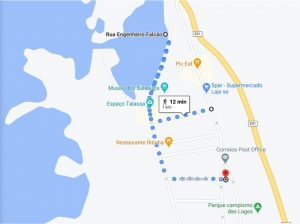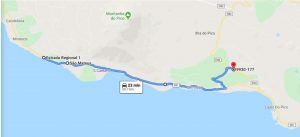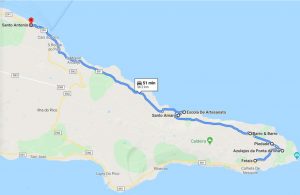
Island of Pico
In Pico, where the seascape is impressive, life and vineyards grow among volcanic rocks, and the dragon trees have forgotten their age, the mountain and the island are one and the same… and one of the vertices of the triangle of islands.
Itinerary 1 – Lajes do Pico

1. Right at the centre of town, musician and artisan Rui Silva carries out the tradition of the Portuguese musical instrument adufe (a square or rectangular framed tambourine) by using techniques and materials of high quality, as well as an innovative approach. (Mapa)
2. The island’s best wine, honey, fruit and cheese become delicious and original pastries at the “Aromas e Sabores” patisserie in the heart of Lajes! Pastries, cakes, jam or sweets may be enjoyed here or taken home for sharing. (Mapa)
3. Once the island’s most traditional whaling town, Lajes is also home to artisan Manuel Gonçalves, who creates decorative and fashion jewellery scrimshaw items (made of whale’s bone or tooth) by means of time-honoured techniques. (Mapa)
4. For more than a century, whale hunting was a major economic activity here—and it’s what inspires scrimshaw artisan Camilo Costa who, from the whale’s bone and tooth, creates items connected to whale hunting and fashion jewellery.(Mapa)
5. For the last stop of this itinerary, visit the workshop of Abel Gonçalves and get familiarised with his lifelong art of transforming wood into miniatures full of life and History. His works can be found at the Wine Museum of Pico. (Mapa)
Itinerary 2 – Madalena and Lajes

1. Go as far as São Mateus and visit “Picoartes”, where the island’s traditional lace, scrimshaw and fish scales are all part of this artisan’s inspiration; her work features in one of the projects by artist Joana Vasconcelos. (Mapa)
2. Still in São Mateus (Madalena municipality), artisan Filomena Cardoso’s traditional lace creations display floral or geometric patterns and are worthy of the Azores Certificate of Origin. (Mapa)
3. In the parish of São João, this Cooperative (founded in 2009) produces, sells and divulges Pico’s long-established arts, particularly artistic lace and “azulejos”—hand-painted glazed tiles—combining tradition and modernity. (Mapa)
4. Almost back to Lajes, in the parish of Silveira, stop at Osvaldo Inácio’s workshop and appreciate his scrimshaw creations (made from whale’s bone or tooth), whether it’s sculpted miniatures or fashion jewellery. (Mapa)
Itinerary 3 – Piedade, Santo Amaro and Santo António

1. In the parish of Piedade, on the island’s east side, the little village of Fetais is home to artisan Maria de Fátima Freitas who, in her workshop, creates beautiful and delicate items made of lace, fish scales, patchwork and straw. (Mapa)
2. Pico and its fauna and flora have been inspiring artisan Isabelle Clerc since 2017; in her workshop (at Ponta da Ilha, in Piedade), octopi, whales or Pico’s mountain inhabit her workshop and decorate her vibrant tiles. (Mapa)
3. The satin stitch and Faial and Pico’s traditional lace—as well as more modern options—are the areas of expertise of artisan Fernanda Sousa, whom you can visit before leaving the parish of Piedade. (Mapa)
4. Already in the parish of Ribeirinha, get to know artisan Marjella Vermazeren who resorts to different techniques, as raku or pit firing, to create astonishing pottery objects of unusual shapes and colours, moulded by hand or using the potter’s wheel. (Mapa)
5. In the municipality of São Roque everyone knows the “Escola de Artesanato de Santo Amaro”, founded by two artisans in 1986 — it was here that many learnt how to work vegetable fibres (wheat, maize or dragon tree fibres), lace, wheat straw embroidery, fish scales, and the famous maize dolls called Labregas do Mato. (Mapa)
6. Before leaving Santo Amaro, pay a visit to “Loja da Margarida” and take pleasure in seeing the patchwork creations of Margarida Neves: purses, blankets, dolls, bags or decorative panels full of colour and texture! (Mapa)
7. In Santo António, at “A Buraca” wine cellar and shop, you can taste and purchase Pico’s famous brandy wines —artisan Leonardo Silva has created here a project that comprises a shop, a cooper’s, a blacksmith, and several workshops to create items from straw, wool or wicker… plus a traditional kitchen where seasonal fruit is turned into sweets and jams. (Mapa)